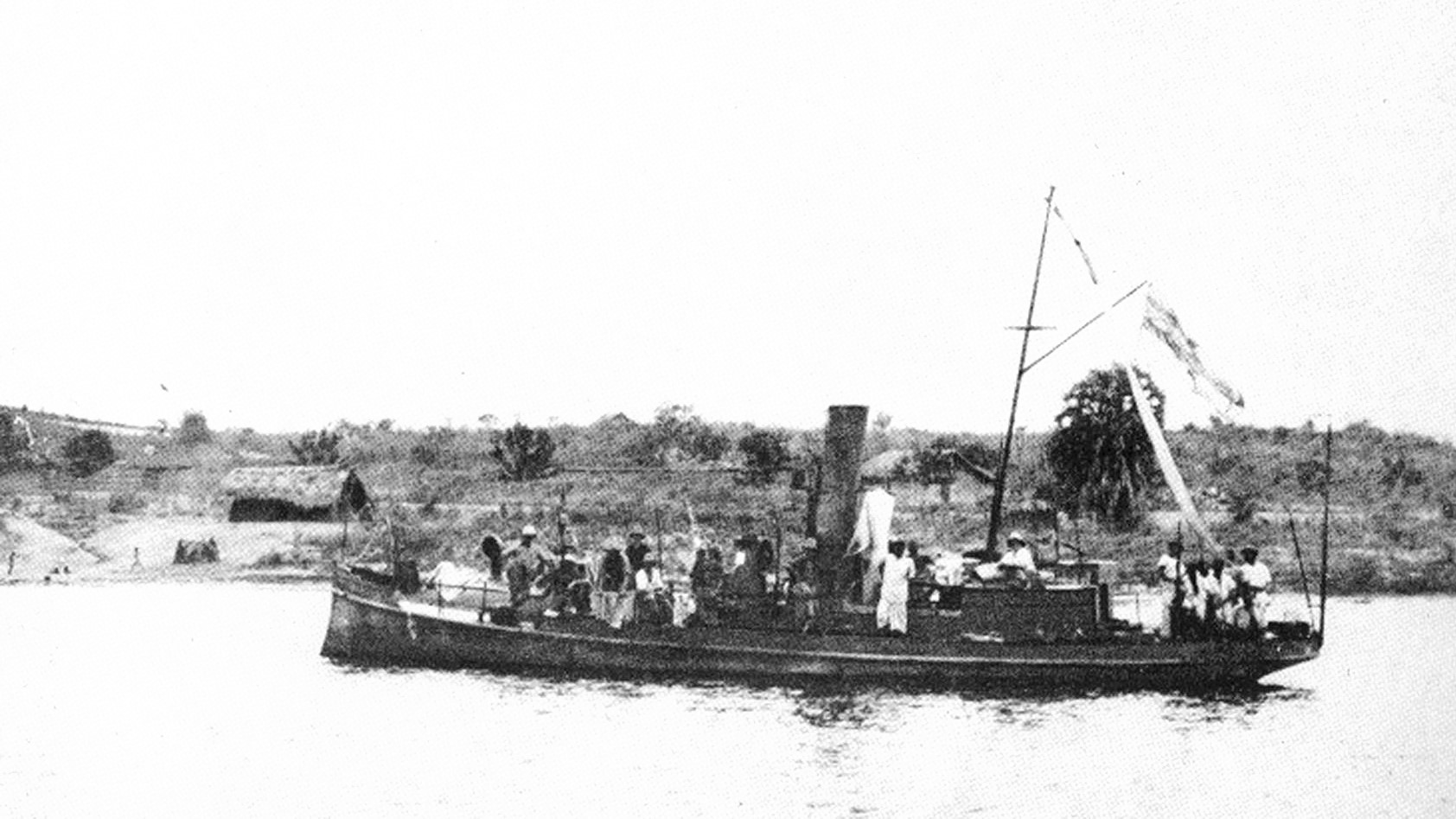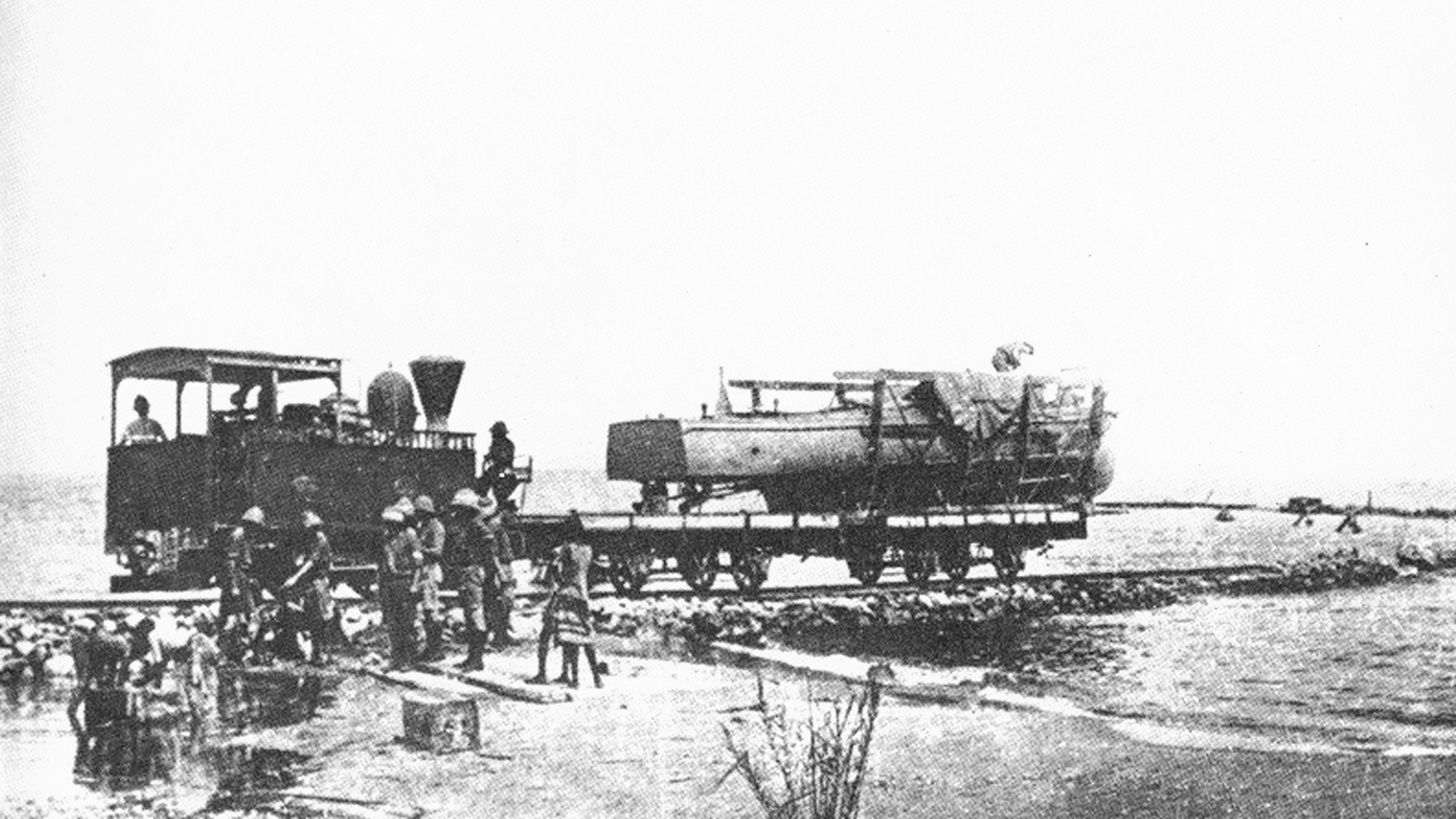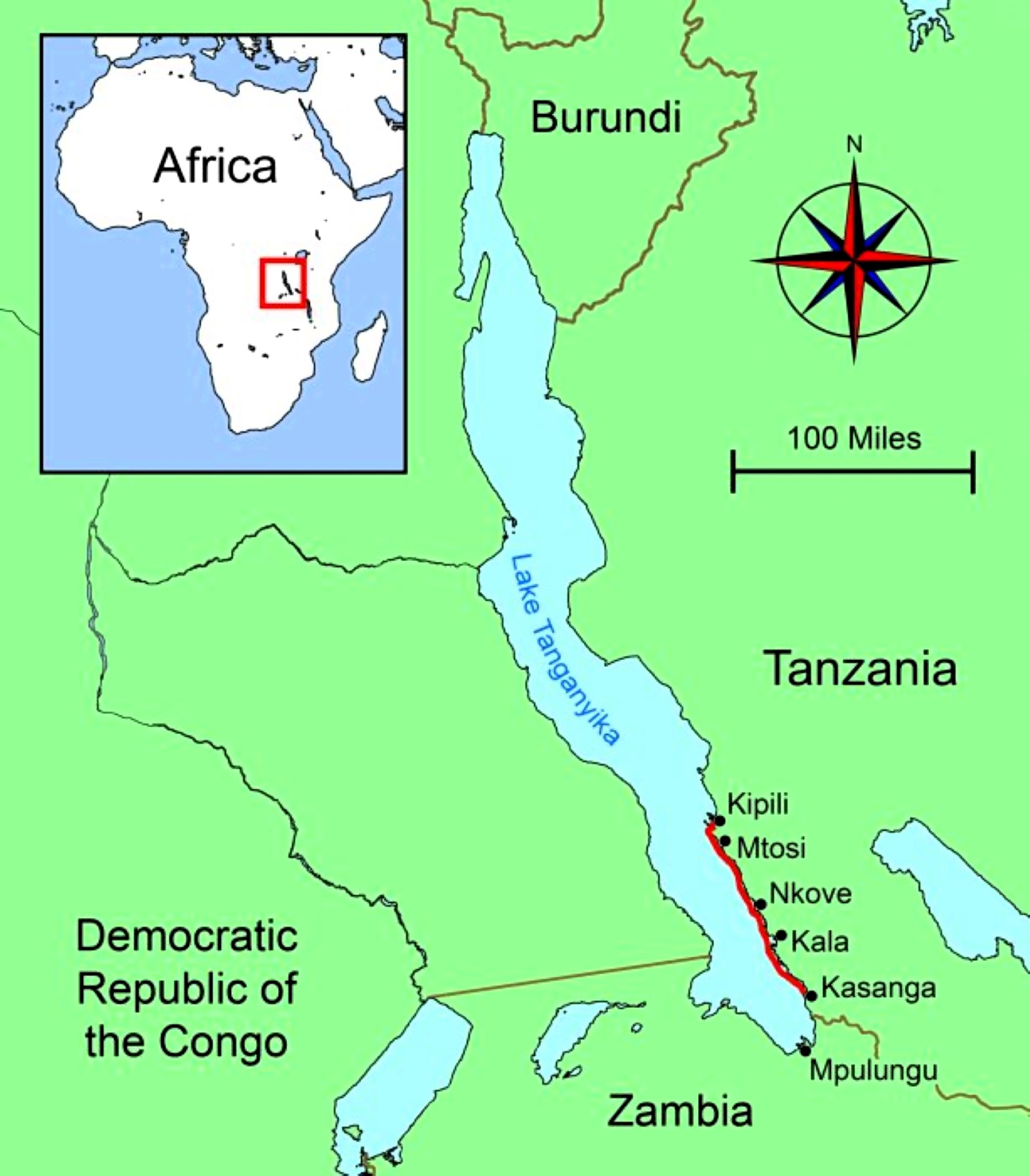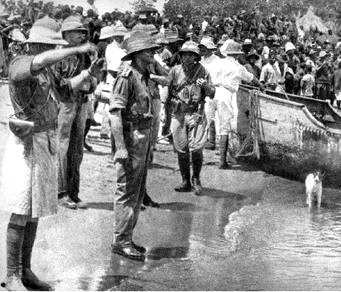By Ross Gillett
Some of the most exotic campaigns of the Great War (1914 to 1918) were fought in Africa. All but forgotten today, they are fascinating stories in their own right. The longest naval engagement of history was fought in a river delta of German East Africa, where it took 255 days and 27 allied ships (including the RAN light cruiser HMAS Pioneer) to locate and sink just one German cruiser, named Konigsberg.
However, the campaign on Africa’s Lake Tanganyika was truly bizarre. This long lake had a shore that was shared by three colonial powers: Germany to the east, Belgium on the west, and Britain on the southern shores. When the Germans on the lake began to attack Belgian shipping, the British decided it was their duty move some boats into the region and establish an Allied dominance.

Lake Tanganyika, known as ‘The Blue Heart Of Africa’, occupied an important strategic position between the Allied Belgian Congo and the German possession of Tanganyika (later known as Tanzania). German auxiliary warships dominated the lake; the 1,500-tonGoetzen, armed with a single 4.1-inch gun, the 150-ton Hedwig Von Wissmann and the 53-ton tugboat (launch) Kingani.
To dispute control of the lake, two small wooden 40-foot motor launches (originally built in England for the Greek air force) were conveyed from the River Thames via Capetown to Lake Tanganyika to represent British interests and to deal with the German ships stationed there. The use of purpose-built or larger warships was just impracticable. The expedition travelled 2,800-miles overland, much of it by rail and river but some of it, dragged by steam traction engines and then by oxen over mountains. The trip took from July to October 1915 to complete.
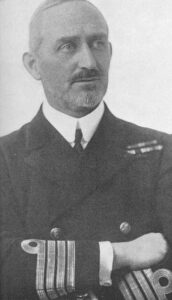
Lieutenant Commander Geoffrey Spicer-Simson, who led that expedition soon gained a reputation as one of the oddest naval figures of all time. Spicer-Simpson’s arms and legs were covered with tattoos, and at times he acted like a character from the much later ‘Monty Python’s Flying Circus’. His only earlier claim to fame was that he was the oldest lieutenant commanders serving in the Royal Navy.
Having worked behind a desk for most of his career, he was assigned the Tanganyika assignment as no other officer volunteered to take it. Things got even stranger after reaching the lake. He began wearing skirts, which he claimed his wife had made for him. Whenever a decision had to be made, he usually made the wrong one, but incredible luck saw him through anyway. One local African tribe, the Ba-HoloHolo, thought that his ‘madness was next to godliness’, making clay images of Spicer-Simson and paying homage to him when he took a bath.
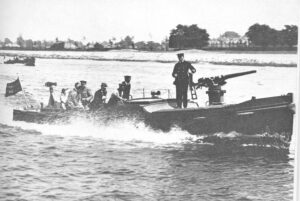
Both of the British motor launches bore numbers instead of names, but Spicer-Simson soon christened them Dog and Cat. After the Admiralty protested that they were inappropriate names, he renamed them Mimi and Toutou. After these new names were accepted as alternatives, he later explained that these meant “Miaow” and “Bow-wow” in French. Each of the craft mounted one three-pounder gun fore and one machine gun aft. The launches initially captured the launch Kingani (which Spicer-Simpson renamed Fifi. He refitted the vessel as flagship of the British Flotilla, then sank the larger steel ship Hedwig Von Wissman. Spicer-Simson received credit for both victories. For the action against Hedwig von Wissmann he was awarded the Distinguished Service Order on 1 May 1916.
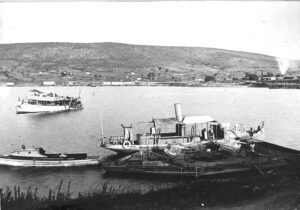
The larger Goetzen was then attacked by British aeroplanes in port and scuttled. British foot-soldiers had marched up from Rhodesia to capture the main German fort on the lake, but on this occasion, Spicer-Simson kept his ‘fighting fleet’ in port, a move which allowed the enemy enough time to escape in their own boats. He must have considered there was no need to risk himself anymore, as now he was a hero back in London!
With the conflict over Germany’s colonies complete, their lands were quickly disposed of. Togo and Cameroon were divided between France and Britain. South-west Africa went to South Africa, while German East Africa was divided into the British-ruled Tanganyika and Belgian-ruled Rwanda-Urundi. All of these territories were said to be temporary ‘mandates’, being allocated by the League of Nations, but in reality, there was little difference between them and other colonies.
The well-known novel, The African Queen by C. S. Forester was inspired by the exploits of Spicer-Simpson, as was Humphrey Bogart’s famous film of the same name.

